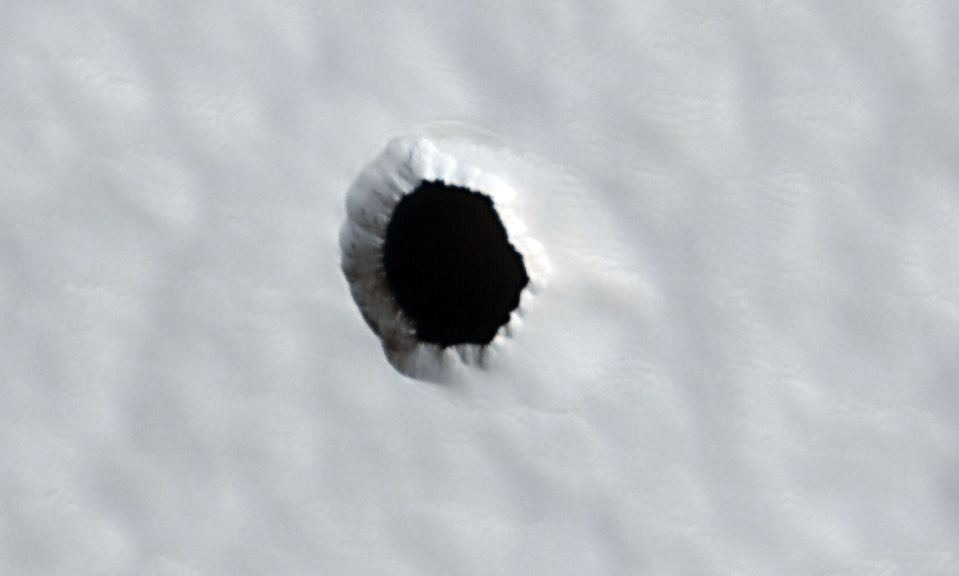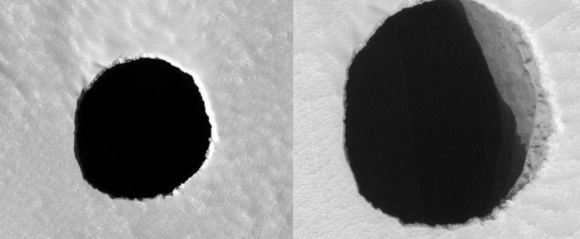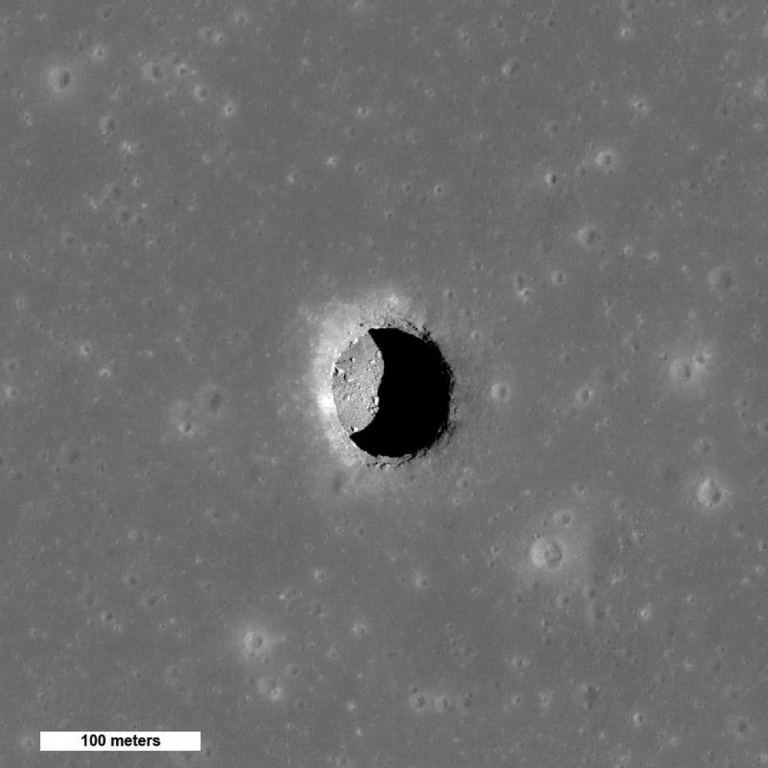Humanity dreams of colonizing Mars and is actively preparing to send the first humans to the Red Planet. The first expedition will need to find shelter from radiation, extreme temperatures and dust storms. There are large underground lava tubes on the planet that could serve as such shelters. Access to lava tubes can be provided by sinkholes in the form of holes, the so-called “skylights”.

One of these holes was found by NASA’s Mars Reconnaissance Orbiter (MRO), the HiRISE camera of which shows a pit with a diameter of several meters in the region near Arsia Mons. It is one of the three dormant volcanoes of Tharsis Montes, which is part of the large volcanic plain of Tharsis. Does this hole on Mars lead to a larger underground cave? This question remains open.

The Tharsis region is raised 10 km above the average altitude of Mars. It was once volcanically active. The pits on its territory may be holes in underground lava tubes. But their true nature remains uncertain. One image shows an illuminated side wall, which may indicate a cylindrical pit rather than the entrance to a cave or tube.
Holes on the Earth and Moon
Similar holes are found on Hawaiian volcanoes, where they are called pit craters. They usually do not connect to long caves or lava tubes, but are the result of deep landslides. The depth of Hawaiian pit craters varies from 6 to 186 meters, and the width from 8 to 1140 meters. The Arsia Mons pit has a depth of about 178 meters.

Lava pits and tubes on the Moon are better explored than on Mars. It is known that some of them are thermally stable at a temperature of about 17°C. For the exploration of these caves, conceptual designs of robots are being considered on the Moon, where astronauts could hide in inflatable shelters protected from temperature fluctuations, radiation and micrometeorites.
Mystery of Lava tubes
Lava tubes may also exist on Mars. A weaker gravity would have allowed much larger tubes to form. The images show craters representing collapsed tubes, and it is possible that not all of them have collapsed.
Martian lava tubes remain a mystery. Scientists have found many morphological signs indicating their presence. But without clear evidence, it is impossible to say that they exist. Could they one day become shelters for astronauts? Maybe. This requires a robotic mission to explore them.
Earlier we talked about how to turn Mars into a semblance of Earth.
According to sciencealert.com


